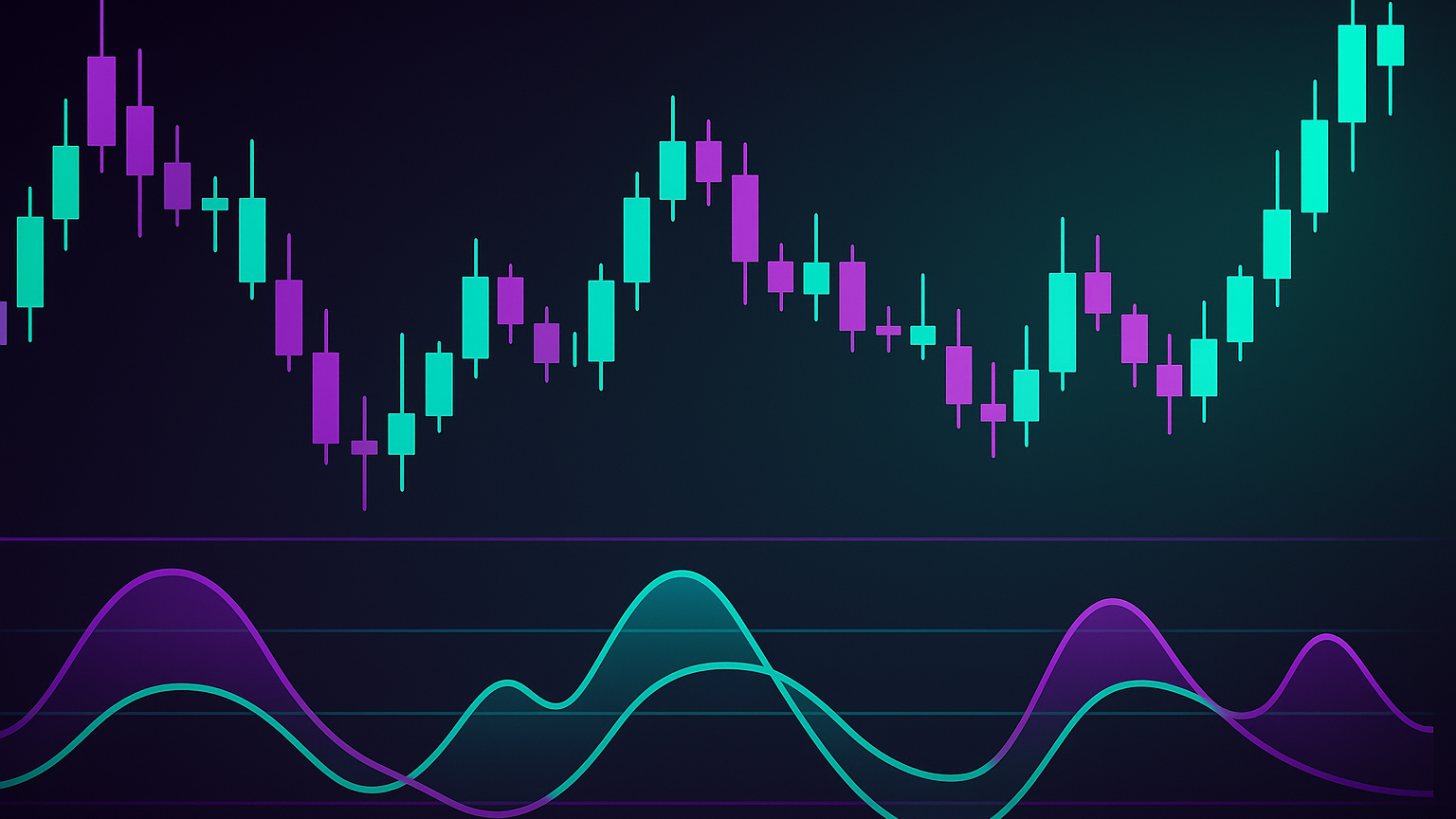Learn how to identify and trade the Piercing Line candlestick pattern to capitalize on bullish market reversals with effective strategies.
The Piercing Line, a LuxAlgo Library indicator: Candlestick Structure, signals potential bullish reversals in downtrending markets. This LuxAlgo Library indicator: Reversal Candlestick Structure formation is highly effective, with a 72.9% confirmation rate across 4,120 markets. Here's what you need to know:
- Structure: A bearish candle followed by a bullish candle that opens lower but closes above the midpoint of the first candle.
- Key Features: Appears in a downtrend, shows a price gap, and confirms reversal within 2–4 candles.
- Best Timeframes: Daily and weekly charts for higher accuracy.
- Confirmation Tools: Increased volume, RSI bullish divergence, MACD crossover, and proximity to support levels.
- Trading Strategy: Enter above the second candle's high after confirmation, set stop-loss below the pattern's low, and aim for a 2:1 or 3:1 reward-to-risk ratio.
This pattern is ideal for short- to medium-term trades and works best when combined with technical indicators and strong risk management.
How to Trade the Piercing Line Candlestick Pattern
Pattern Recognition Guide
Learn how to spot the Piercing Line pattern by analyzing specific candlestick formations and market conditions.
How to Identify the Pattern
To pinpoint the Piercing Line pattern in real-time markets, pay close attention to its structure and follow these key criteria:
| Component | Criteria |
|---|---|
| Market Context | A clear downtrend with consistent lower lows and lower highs |
| First Candle | A long bearish candlestick, signaling strong selling pressure |
| Second Candle | A bullish candlestick that opens below the first candle's close |
| Price Gap | A downward gap between the first candle's close and the second's open |
| Closing Level | The second candle closes above the midpoint of the first candle's body |
Best Timeframes for Analysis
For better accuracy, focus on longer chart timeframes:
- Daily Charts: Reflect full trading sessions and institutional activity.
- Weekly Charts: Minimize market noise and highlight stronger trend reversals.
- 4-Hour Charts: The shortest timeframe suitable for intraday trading.
To strengthen confirmation, integrate moving averages that match your style. For long-term trades, the 50 and 100 EMAs are useful; for short-term trades, the 9 and 20 SMAs are more effective.
Tools for Pattern Confirmation
Once you've visually identified the Piercing Line pattern, use these tools to validate it:
-
Primary Confirmation Tools
Increased trading volume on the second candle and bullish divergence on the Relative Strength Index. -
Secondary Validation Methods
A bullish MACD crossover adds confidence to the reversal setup. -
Support Level Analysis
More reliable when it forms near established support—use Trend Lines and past swing lows to identify these zones.
Signal Analysis Methods
After identifying pattern features, evaluate the reliability of the reversal signal:
Signal Strength Indicators
Use these factors to gauge signal strength:
| Strength Factor | Strong Signal | Weak Signal |
|---|---|---|
| Candle Position | Second candle closes deeply within the first candle's body | Barely enters the first candle's body |
| Volume Profile | Noticeable increase in volume on the second candle | Volume is low or decreasing |
| Market Position | Appears at a critical support level | Forms in a neutral zone |
| Trend Context | End of a clear, sustained downtrend | During sideways movement |
| Technical Alignment | RSI or MACD align with bullish momentum | Mixed or conflicting signals |
False Signal Prevention
- Volume Confirmation: Ensure trading volume rises on the second candle.
- Technical Verification: Cross-check with RSI, MACD, or Stochastic Oscillator.
- Wait for Confirmation: Let the next candle or session confirm before entering.
Market Context Analysis
- Assess the Downtrend: Measure the strength of the preceding downtrend and mark key support.
- Market Sentiment: Use technical indicators and market indices to gauge overall sentiment.
- Manage Risk: Place stop-loss below the recent low and size positions according to confirmation strength.
Trading Strategy Implementation
Trade Entry and Exit Rules
Wait for price to close above the 9 EMA to confirm upward momentum, then enter a few ticks above the second candle’s high.
Take TSLA as an example: it formed near support, closed above the midpoint of the bullish candle, and a MACD crossover confirmed the move.
For profit-taking, target the next resistance, use a Fibonacci Trailing Stop just below the 9 EMA, and aim for a 2:1 or 3:1 reward-to-risk.
Stop-Loss Placement
Place your stop-loss slightly below the bullish candle’s low with a 0.5–1% buffer.
- Use closing-price triggers over intraday levels.
- Adjust stops as the trade moves in your favor.
Technical Tool Integration
In a JPM trade, the pattern formed at a higher-timeframe support and was validated by RSI divergence, leading to a strong move.
- Volume Analysis: Look for buying pressure spikes.
- Momentum Indicators: Confirm with RSI or MACD.
- Dynamic Support/Resistance: Align entries with key zones.
- Moving Averages: Use the 9 EMA for entries and trailing stops.
Expert Trading Tips
Volume Confirmation Methods
Strong volume on the bullish candle often signals genuine buying interest. Look for consistent rises as confirmation.
Adjusting for Market Conditions
Be aware of extended sessions or corporate actions—timing and analysis must match the market you’re trading.
Common Mistakes to Avoid
- Pattern Recognition: Only trade when the second candle closes above halfway.
- Technical Analysis: Always seek volume and indicator confirmation.
- Risk Management: Follow a clear stop-loss plan.
Summary
Pattern Overview
The Piercing Line is a two-candlestick reversal signal that closes above 50% of the prior candle’s body and shows a 72.9% confirmation rate across 4,120 markets. According to Bulkowski’s research, it ranks 21st out of 103 patterns with a 64% historical confirmation rate.
Key Trading Guidelines
Higher reliability when the pattern forms near support and is backed by strong volume and technical alignment.
Tips for Better Strategy
Use market-profile tools and dynamic stop-loss levels. Apply the M.A.E.E. framework:
- Market Structure: Confirm downtrend.
- Area of Value: Pattern near support.
- Entries: Volume confirmation.
- Exits: Clear profit targets and stop-losses.








